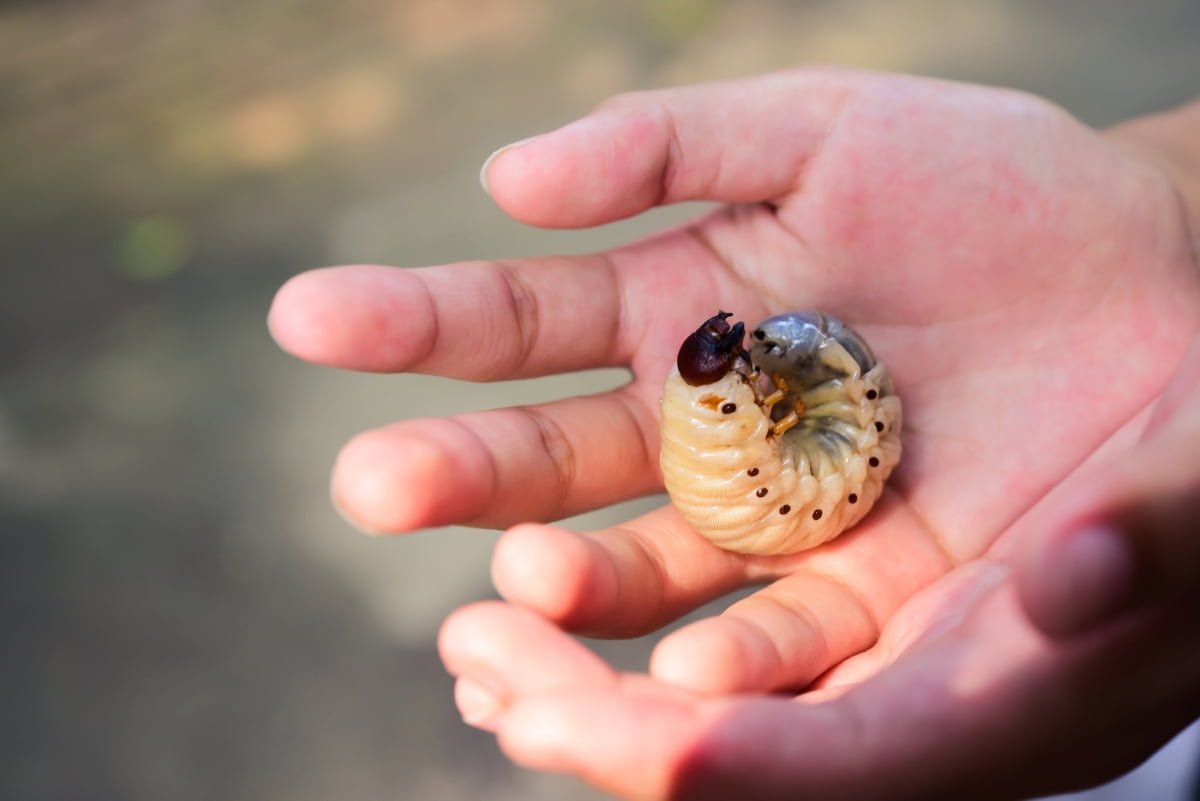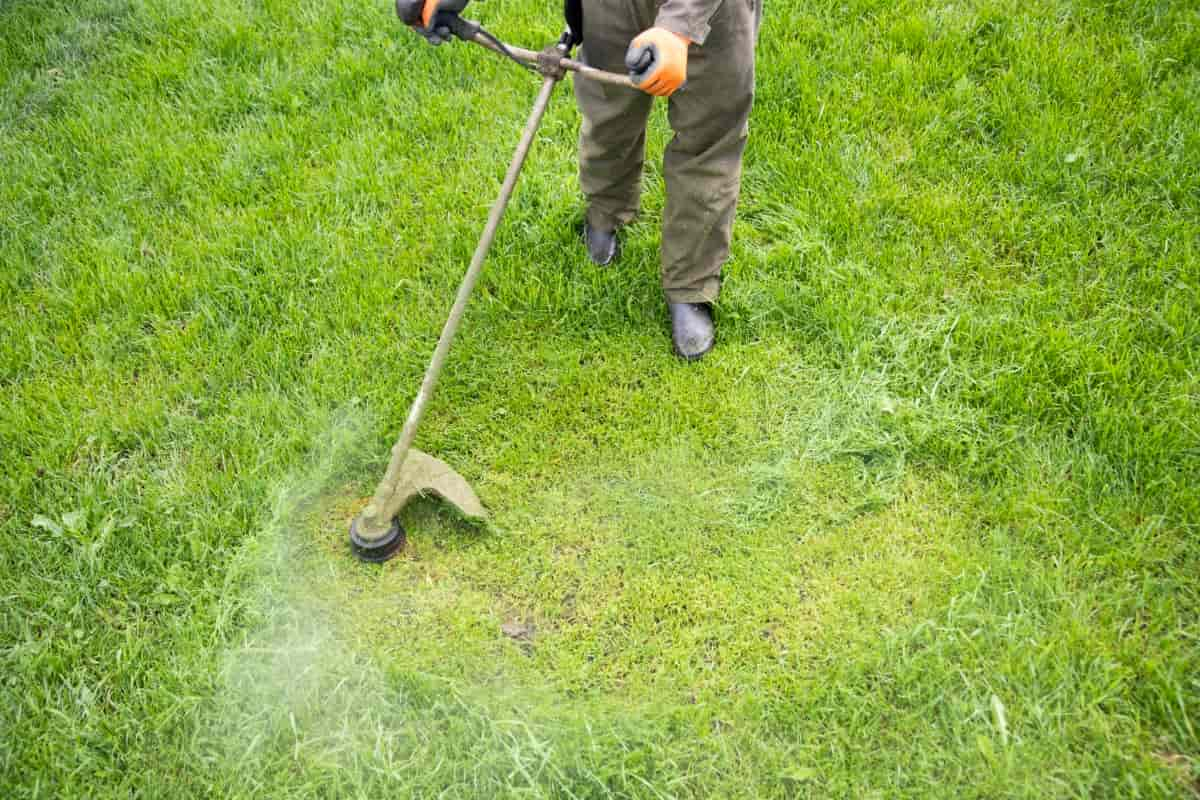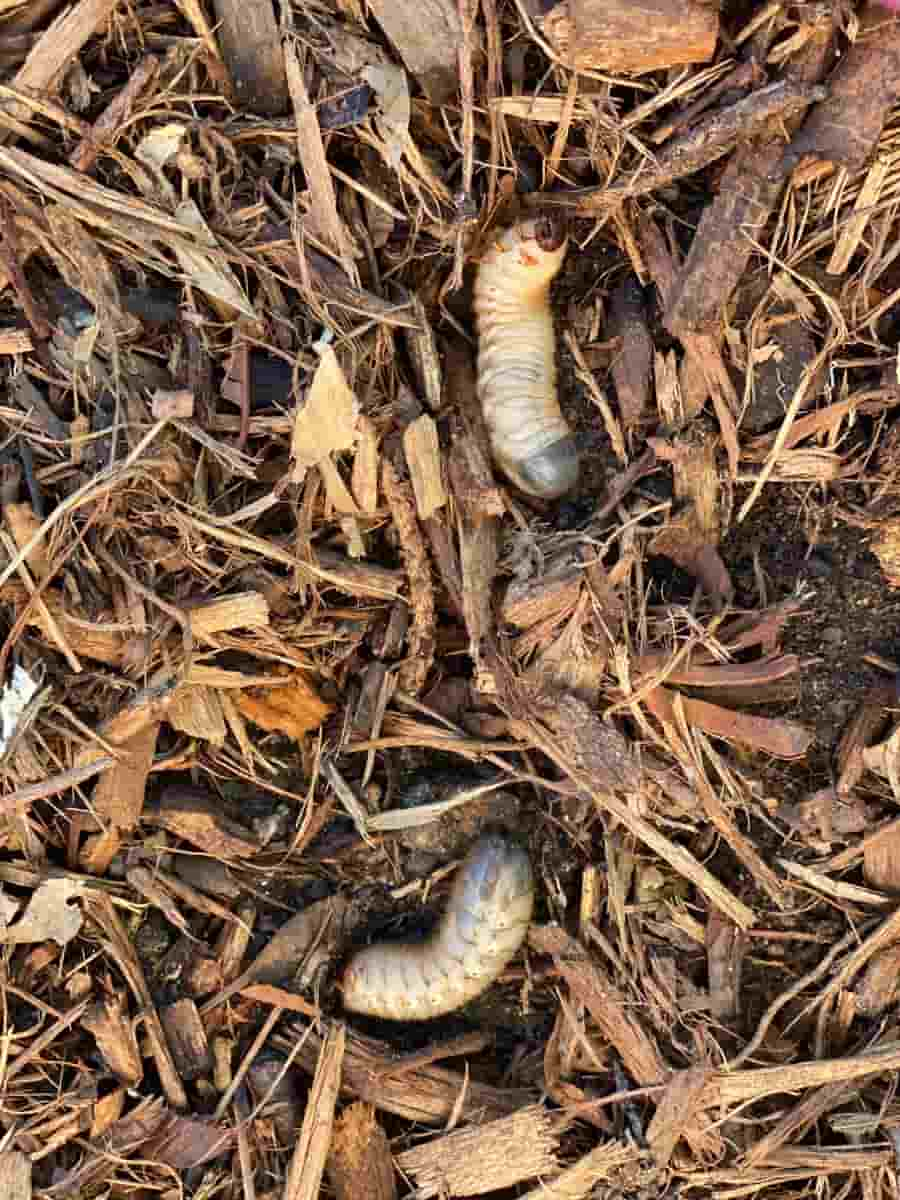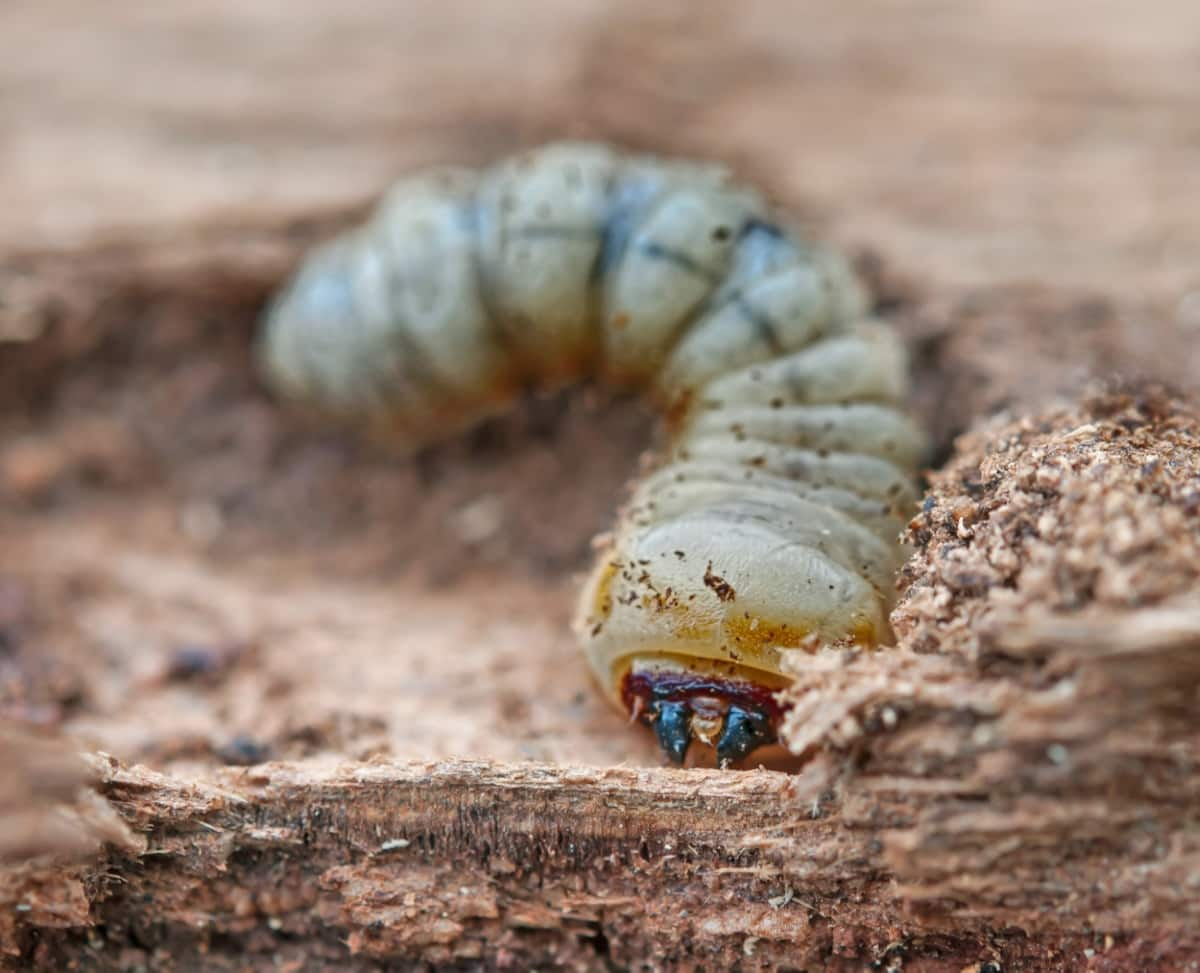White grubs are the larvae of various beetles, such as Japanese beetles, June bugs, and European chafers, and they can cause significant damage to lawns by feeding on grassroots. These grubs can wreak havoc on your lawn, causing brown patches and weakened grass. Controlling and treating white grubs in your lawn naturally is an eco-friendly approach that avoids the use of chemical pesticides. Here’s a guide on how to get rid of white grubs in your lawn using natural methods.

How to Get Rid of White Grubs in Lawn Naturally
Beneficial Nematodes is a Natural Solution to White Grubs
A natural and effective solution is the use of beneficial nematodes. These microscopic organisms are parasitic and feed on the larvae of white grubs, ultimately killing them. To apply beneficial nematodes, mix them with water and spray the solution onto the white grub-prone areas. These nematodes actively seek out grubs in the soil, providing a chemical-free and eco-friendly alternative to synthetic pesticides. Regular applications, especially in late summer or early fall, can help control white grub populations and promote a healthier lawn.
How to Use Neem Oil to Control White Grubs in Your Lawn
Neem oil contains compounds that disrupt the life cycle of grubs, preventing them from developing into destructive pests. To use neem oil, dilute it as per the instructions and spray it on affected areas. Neem oil not only targets grubs but also acts as a deterrent for other pests and promotes overall soil health. Apply the treatment in late spring or early summer for optimal results, and repeat as needed. Neem oil offers a safe and environment-friendly alternative to chemical pesticides, ensuring a vibrant and grub-free lawn.
The Benefits of Introducing Parasitic Wasps to Your Lawn
Introducing parasitic wasps to your lawn can be a highly beneficial and environmentally friendly strategy for controlling white grubs. These small, non-stinging wasps, such as the parasitic Hymenoptera species, lay their eggs on white grub larvae in the soil. Once the wasp eggs hatch, the larvae feed on the grubs, effectively suppressing their population.
One key advantage is the precision of this biological control method, targeting pests without harming beneficial insects or causing harm to the environment. Unlike chemical pesticides, parasitic wasps offer a sustainable and natural solution to white grub infestations.
Use Herbs and Flowers Companion Planting to Deter White Grubs
Certain plants release chemicals or emit scents that repel grubs, creating a protective barrier for your grass. Marigolds, with their natural pest-deterring properties, are an excellent addition to your lawn. Their strong aroma disrupts the attraction of white grubs to the soil. Herbs like rosemary and thyme also contribute to grub prevention.
In case you missed it: White Grub Management in Sugarcane: Symptoms, Treatment, Chemical, Biological, Natural, and Organic Control

These aromatic herbs release oils that repel pests, including grubs, while adding fragrance to your outdoor space. Planting these companion plants strategically around your lawn or in proximity to susceptible areas can help create an environment inhospitable to white grubs.
The Importance of Proper Lawn Care to Prevent White Grubs
Regular practices such as consistent mowing, adequate watering, and appropriate fertilization contribute to a robust grass root system, making it less susceptible to white grub damage. Aerating the soil enhances oxygen flow and drainage, discouraging grubs from establishing themselves. Additionally, avoiding the overuse of chemical pesticides helps preserve the natural balance of beneficial insects that can control white grub populations.
How to Identify White Grubs in Your Lawn and Take Action
Look for brown patches, wilting grass, and increased bird activity as birds feed on grubs. To confirm, peel back the turf; white grubs are C-shaped, cream-colored larvae beneath the soil surface. Once identified, take immediate action. For prevention, maintain proper lawn care practices such as regular mowing, proper watering, and avoiding over-reliance on chemical pesticides. Early detection and proactive measures are key to preserving a lush, grub-free lawn.
The Benefits of Using Diatomaceous Earth to Get Rid of White Grubs
Composed of fossilized diatoms, DE is a fine powder that works by dehydrating and damaging the exoskeletons of grubs upon contact. Applying DE to affected areas creates a barrier that prevents white grubs from further damaging the grassroots. Its non-toxic nature makes it an ideal choice for organic gardening and environmentally conscious lawn care.
In case you missed it: Chilli Root Grub Nematode Pest Management: Symptoms, Treatment, Chemical, Biological, and Organic Control

To use DE, evenly distribute the powder over the affected lawn areas, reapplying after rain or irrigation. Embracing diatomaceous earth as a white grub control method aligns with a sustainable and chemical-free approach to lawn maintenance.
Use Natural Lawn Fertilizers for Grub-Free Lawn
Traditional synthetic fertilizers can attract white grubs, exacerbating infestations. Choose organic alternatives such as compost, well-rotted manure, or natural fertilizers rich in nitrogen, phosphorus, and potassium. These organic options enhance soil health, fostering a robust grass root system that is more resistant to white grub damage.
Moreover, the gradual release of nutrients from natural fertilizers minimizes the risk of creating an environment conducive to grub infestations. By nourishing your lawn with natural fertilizers, you not only support its overall well-being but also establish a balanced ecosystem that discourages the presence of destructive pests like white grubs, ensuring a beautiful and grub-free lawn.
How to Use Coffee Grounds to Repel White Grubs in Your Lawn
Spread used coffee grounds evenly over the affected areas, forming a protective layer on the soil surface. The caffeine in coffee disrupts the life cycle of white grubs, acting as a deterrent without harming beneficial soil organisms. Coffee grounds also improve soil structure, aeration, and water retention, promoting a healthier lawn. Reapply the coffee grounds after rain or irrigation for sustained effectiveness. This eco-friendly approach not only repels white grubs but also recycles coffee waste, contributing to sustainable lawn care practices.
The Effectiveness of Using Beer Traps to Capture and Kill White Grubs
To create a beer trap, bury a container, such as a shallow dish or cup, in the affected area with the rim at soil level. Fill the container with beer, preferably cheap and non-light beer. The scent of the beer attracts adult beetles laying eggs, luring them into the trap. Once inside, the beetles drown in the beer.
In case you missed it: How to Prevent Club Root Disease: Causes, Identification, Symptoms, and Treatment

While beer traps may not eliminate all white grubs, they can significantly reduce the population by targeting adult beetles before they can lay eggs. This approach is environmentally friendly, avoiding the use of chemical pesticides. Regularly empty and refill the traps for ongoing effectiveness. Incorporating beer traps into your lawn care strategy provides a natural and chemical-free means of curbing white grub infestations.
Conclusion
In conclusion, addressing white grub infestations in your lawn naturally involves a multi-faceted approach. By embracing these methods, you not only combat white grubs but also promote a healthier, resilient lawn, ensuring long-term success in pest control through sustainable and natural practices.
- Beneficial Insects in Pest Management
- Natural Solutions for Pest Control in Flower Gardens
- Types of Fungicides Used in Agriculture
- Common Issues in the Fruit Development Stage of Pomegranate Farming
- Fruit Development Issues in Papaya: Easy Solutions and Treatment
- Soil-Borne Diseases and How to Protect Your Plants
- Practices to Prevent Disease Spread in the Garden
- From Wilted to Thriving: How to Treat Root Rot Naturally in Houseplants
- Natural Remedies to Cure Brown Spots on Fig Tree Leaves